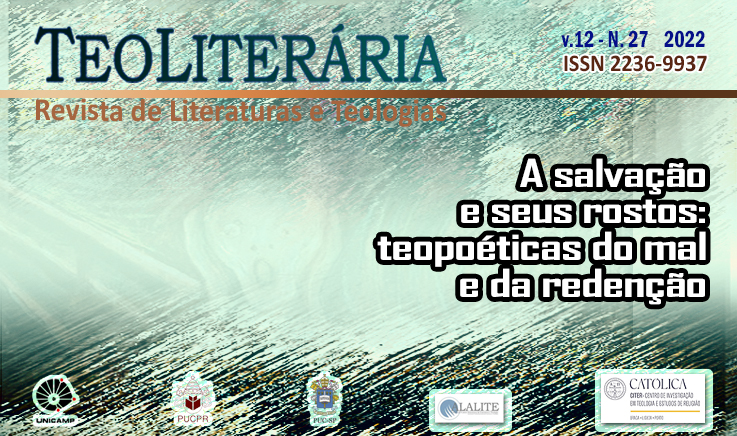Las Figuras Femeninas de la Sabiduría y la Justicia en la Obra De Hildegard de Bingen (1098-1179)
DOI:
https://doi.org/10.23925/2236-9937.2022v27p164-171Abstract
In this presentation I want to refer to the presence of two female figures who have an important rolein the work of Hilegard.de Bingen as we can know it thanks to the writings of two monastic authors
who worked with his writings: his hagiographer Theoderich of Echternach and the Abbot Gebeno of Eberbach,
a compiler of his prophetic and apocalyptic work. In this context, I will refer to the presence of the figures Sapientia, Wisdom, and the second is Justice,
who does not have such an important presence as the first, but who has a particularly interesting voice
and role in the apocalyptic thinking of Hildegard. Hildegard, magistra of a convent in Bingen, on the banks of the Rhine during the twelfth century,
was read by her contemporaries as a visionary and a prophet, as an interpreter of scriptures and events
in the sphere of the Church as an institution; on the other hand, the interpretation of his work towards
the end of the Middle Ages and in early modernity differs to a great extent from the more contemporary
reception phenomena: more recently. Hildegard has been "read" from philology, the history of music,
literature and philosophy, but also, from her medical writings, she has been studied and "recreated"
from ecology, alternative medicine and feminism. Her visions and prophecies, on the other hand,
have appeared marginally in the tradition of Sophia the Wisdom studies, which had a long and important
history until at least the first half of the 20th century.
References
Beard, Joseph L. y Ehrmann, Radd K., The Letters of Hildegard of Bingen, vol. 1, New York: Oxford University Press, 1994.
Bingen, Hildegarda de. Libro de las Obras Divinas. Barcelona: Herder. 2009. P. 582
Cirlot, Victoria, Hildegard de Bingen, Vida y Visiones, Madrid:Siruela, 1997.
Newman, Barbara. “Seherin-Prophetin-Mystikerin. Hildegard von Bingen in der hagiographischen Tradition” en Hildegard von Bingen. Prophetin durch die Zeiten. Zum 900 Geburtstag, Forster,E., ed., Freiburg a. B.: Herder, 1997, pp. 126-152.
Paz, José Santos. La Obra de Gebenon de Eberbach, Firenze: Sismeli, 2004
Rauh, Horst Dieter. Das Bild des Antichristus im Mittelalter: Von Tyconius zum Deutschen Symbolismus. Beiträge zur Geschichte der Philosophie und Theologie des Mittelalters, Neue Folge, Band 9, Münster: Verlag Aschendorff, 1973.
Stein, Elisabeth, “Das “pentachronon” Gebenos von Eberbach. Das Fortleben der Visions texte Hildegards von Bingen bis ins 15. Jahrhundert”, en “In Angesicht Gottes suche der Mensch sich selbst”. Hildegard von Bingen (1098-1179), Rainer Berndt, ed., Erudiri Sapientia, Berlin: Akademie Verlag, 2001, pp. 577-591.
Theoderich de Echternach, Vita Hildegardis Virginis, Corpus Christianorum Continuatio Mediaevalis, cxxvi. Turnhout: Brepols, 1993.
Published
How to Cite
Issue
Section
License
Copyright (c) 2022 Teoliteraria - Journal of Literatures and Theologies (On Line) ISSN 2236-9937

This work is licensed under a Creative Commons Attribution 4.0 International License.
TeoLiteraria – Journal of Literatures and Theologies owns the copyright of all published material. The whole reproduction of the articles of this Journal in other publications or for any other purpose, by any means, requires a written permission of the editor of this journal. Partial reproductions of articles (abstracts, more than 500 words text, tables, figures and other illustrations) must have a permission written by the publisher and the authors.

